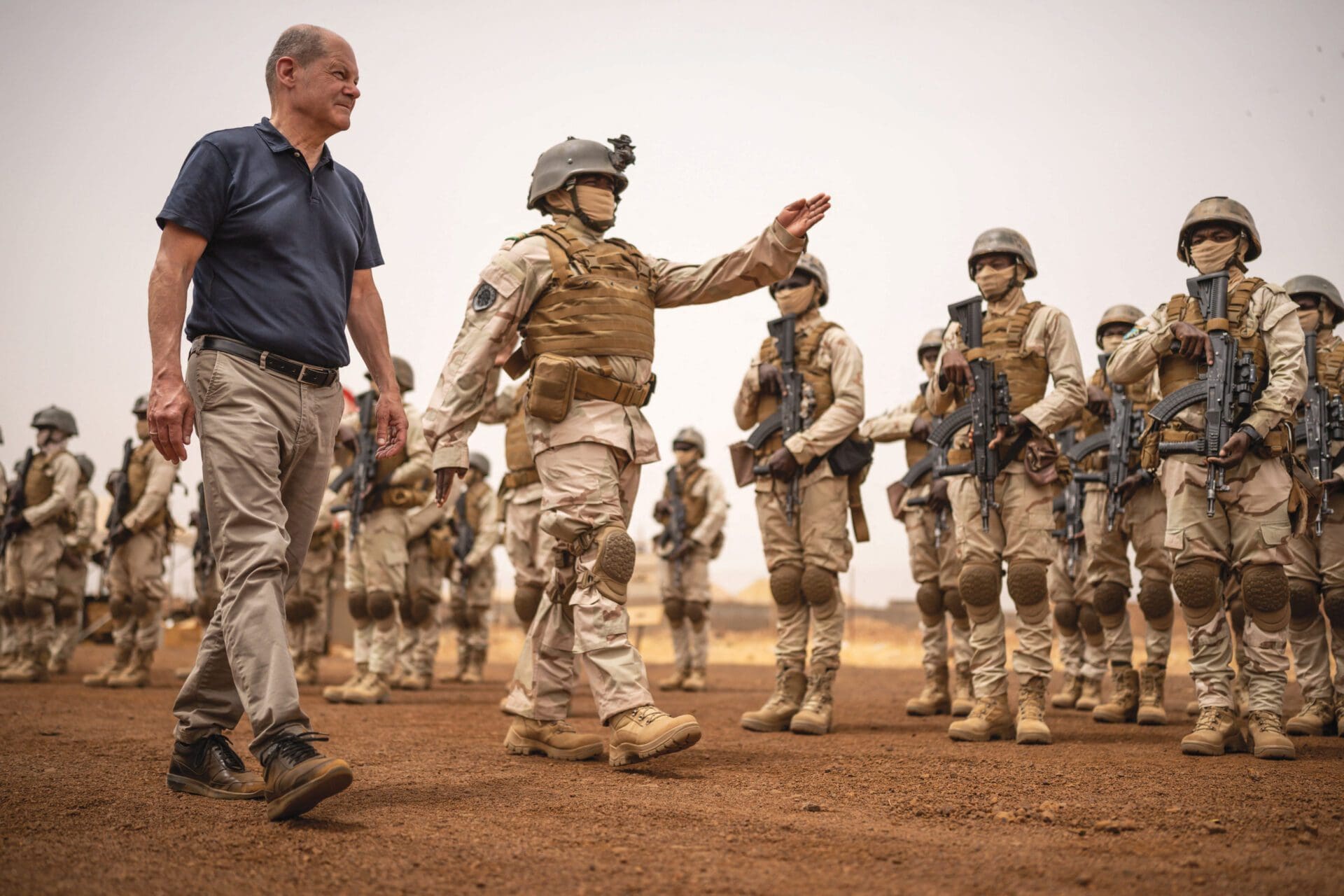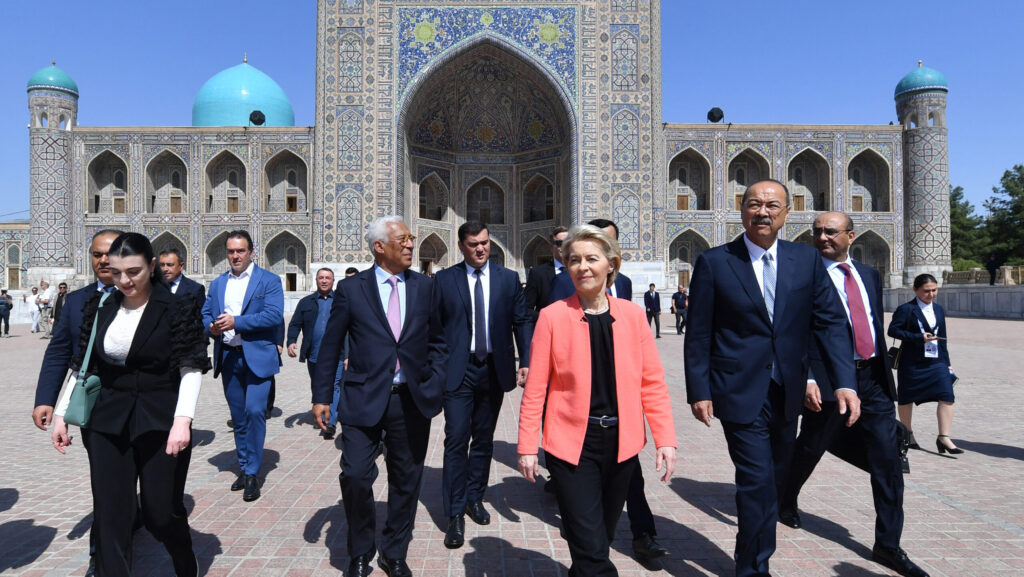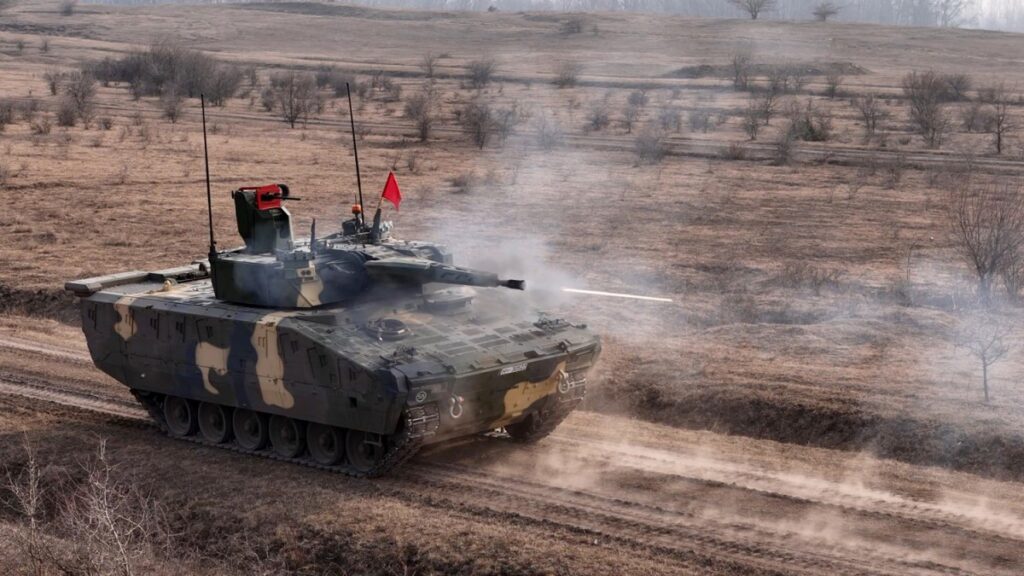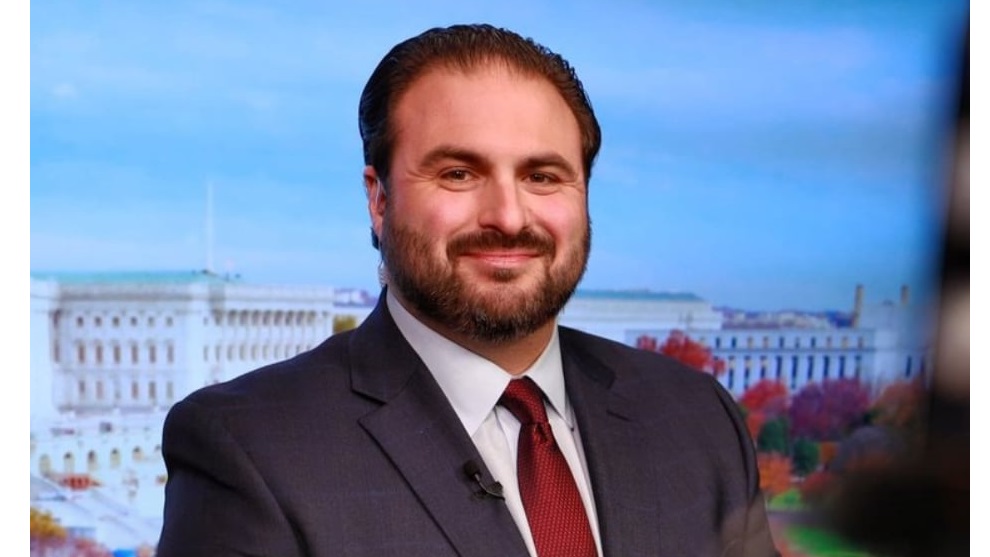This article was published in Vol. 2 No. 4 of the print edition
The start of Russia’s full-scale attack on Ukraine came as a shock for many observers in the international community, and it certainly had an enormous impact on the security perception of politicians in some of Europe’s most important states, including Germany. Due to the political, economic, and security decisions of past and current governments, Berlin found itself in an especially challenging situation. One of the key areas where answers had to be given and decisions made was the state of the German Armed Forces (the Bundeswehr). Decades of underfunding and equipment reduction left the Bundeswehr barely able to defend the country in case of an armed conflict. To the surprise of many, within a few days an ambitious plan was put forward by Germany’s tri-party coalition government that, if thoroughly seen through, might lead to the creation of a potent, capable, rejuvenated Bundeswehr.
Past and Present Political Realities
On 27 February 2022, three days after the initiation of a large-scale war in the European Union’s immediate neighbourhood, Chancellor Olaf Scholz heralded the arrival of a new era for German defence spending. According to the proposal set out by the government, the Bundeswehr was to receive a 100-billion- euro, one-off special fund intended for its fast-paced modernization. During his speech before the members of the German Bundestag, Chancellor Scholz clearly set a new tone:
‘At the Munich Security Conference a week ago I said that we need aeroplanes that fly, ships that can set out to sea and soldiers who are optimally equipped for their missions. That is what is important. And it is quite certainly something that a country of our size and our significance within Europe should be able to achieve. But we should be under no illusions. Better equipment, modern technology, more personnel—all of this costs a lot of money.’1
Following the announcement, four-party negotiations were initiated between the leaders of the Social Democrats (SPD), Liberals (FDP), Greens (die Grünen) and Christian Democrats (CDU/CSU), as the proposal needed backing from the opposition Conservatives, as well as the members of the ruling coalition. This large consensus was necessary to create a two-thirds majority in the Bundestag, which was required for the planned amendment to the constitution.
This agreement was a prerequisite for the creation of the new debt-financed fund, which would be exempt from the constitutional ‘debt brake’ (Schuldenbremse) which would normally impose a strict curb on new borrowing by the German federal government. For similar reasons the planned changes also had to be approved by the delegates of the Bundesrat—the second legislative chamber of the Federal Republic.
The spring months saw intensive negotiations not only between the government and the CDU/CSU (the far-left Die Linke and the far-right AfD initially signalled their opposition to the special fund), but also within the ranks of the ruling coalition. CDU/CSU parliamentary group leader and CDU party leader Friedrich Merz repeatedly stated that the CDU/CSU would not support a possible stopgap solution that would use the fund to top up the existing defence budget in order to reach and even surpass the minimum two per cent of the GDP allocated for defence spending as prescribed by NATO.2 According to the CDU/CSU interpretation, Chancellor Scholz made two separate promises: one to provide a 100-billion-euro special fund for the Bundeswehr, and another to raise Germandefence spending to two per cent of the GDP.
It was the political weight of the CDU/CSU that caused the chancellor’s proposal to be accepted
Following the initial statement by Scholz, the CDU/CSU actively sought to launch a wide social and political dialogue on the future of the armed forces. The CDU/CSU seemingly relished in their ‘newfound’ position as a firm but constructive opposition force that can finally freely argue in favour of the extensive strengthening of the Bundeswehr and its budget. In the end it was the political weight of the CDU/CSU that caused the chancellor’s proposal to be accepted by the SPD and Green party membership. Many SPD party representatives probably feared a further erosion of their voter-base in favour of the Christian Democratic bloc.
The leaders of the SPD and Greens, as well as most prominent members of their parties, had moved away from their original position on security policy and defence spending—as highlighted in their joint coalition agreement treaty in December 2021.3 The comparison of the two parties’ current and past positions on defence offers an insight into how much the security threat perception of the ruling German political elites has changed since the outbreak of the war. As the smaller party in Angela Merkel’s grand coalitions (2005–2009, 2013–2021), the SPD had strongly opposed several capability building and modernization projects of the armed forces, on both financial and moral grounds. This shift in politics is even more spectacular in the case of the Greens—a party that partly stems from the West German peace movement and in the past strongly criticized the deployment of German military contingents abroad. Now the party— as a member of the governing coalition—called somewhat surreally for immediate changes in defence spending, arguing that the ‘deficits in the Bundeswehr are no longer tolerable’.4
By the end of May, following three months of intensive negotiations, a final agreement had been reached between the major German parties that created a sufficient political backing for the creation of the special fund and the acceptance of the required constitutional amendment. On 3 June 2022, the Bundestag accepted the draft law with the required majority (567 to 96, with 20 abstentions). In the end, only a small number of Green and Social Democrat MPs (13 in total) chose to vote against the proposal.5
Changes in Funding
For the last two decades, and especially in the years following the global economic crisis of 2008–2009, defence spending has been kept low by successive German governments. During this period, budget allocations varied between 1.1 and 1.4 per cent of GDP, even at a time when Europe was beginning to wake up from its ‘defence slumber’ after the 2014 annexation of Crimea by Russia. Germany’s failure to reach NATO’s two per cent spending goal was often the source of indirect and direct criticism—by fellow European alliance members, many of whom were likewise unable to attain this ratio, and especially by the USA, the strongest member of the alliance. According to US decision-makers, Germany did not throw its full weight behind the alliance, committing far less than could have been expected on the basis of its size and economic output. Under the presidencies of Barack Obama (2009–2017) and Donald Trump (2017–2021), the country’s overt reliance on American security guarantees and lack of financial commitment to collective defence became a recurring topic. Germany’s ‘freeriding’ in the alliance—as well as that of several other European NATO members—was often a source of criticism from the White House.
With the acceptance of the new law, this is going to change. Even the 100 billion euros of the fund is more than twice the total defence allocation for last year, which amounted to 47 billion. In terms of medium and long-term financing of the Bundeswehr, the decision to significantly increase Germany’s yearly defence spending to reach the two per cent GDP mark is an even more important step than the creation of the special fund. The two per cent goal will result in a drastic overhaul of the original five-year financial plan for defence (2021–2025) which had foreseen an increase in spending for 2022, but also yearly cuts for the 2023–2025 period—with defence-related expenditures comprising an expected 1.1 per cent of the GDP in 2025.6 To reach the two per cent mark, the defence budget will have to increase nominally by approximately 60 per cent in 2022. This in turn would make Germany—based on official data—the biggest military spender in Europe and the third biggest globally behind the United States and China.
Rebuilding Capabilities
The proposal’s approval by the Bundestag and the Bundesrat paves the way for the biggest modernization programme in the history of the Bundeswehr. While seemingly possessing modern equipment and well-trained officers and soldiers, the armed forces are beset by a variety of shortcomings that greatly limit their overall capability. The once formidable German Army—one of the strongest in Europe—with a troop strength of half a million, equipped with top-end armament, has gradually become a giant with feet of clay, due to long-term underfunding. Lack of adequate spare parts, ammunition reserves, timely scheduled maintenance cycles, and low manpower resulted in alarming readiness levels for the Bundeswehr. Recent years have seen some improvement in this regard, but the numbers are still far from optimal—as pointed out by Defence Minister Christine Lambrecht (SPD) during the parliamentary debate on the fund in April.7
The Bundeswehr gradually became a scaled-down, professional military force
As conventional capabilities were, or appeared to be, less and less necessary, the Bundeswehr gradually became a scaled-down, professional military force. A force suited to participation in NATO or EU-led non-combat, peacekeeping, air-policing, and support missions, but much less so for classical territorial defence. From Kosovo and the Baltics to Afghanistan and Mali, the Bundeswehr has been actively involved in international stabilization missions worldwide, and the efficiency of its contingents abroad left the public with a false impression regarding the actual state of the armed forces. In addition to this ‘mission-oriented’ approach, decision-makers also greatly emphasized the necessity of developing new Bundeswehr capabilities in line with the challenges of our times. For example, a particular focus was put on the development of cyber capabilities.8 Following the decision of Defence Minister Ursula von der Leyen (CDU) in April 2016, the Cyber and Information Domain Service (Cyber- und Informationsraum) was formed as the youngest branch of the Bundeswehr.
Mission-based foreign deployment of the Bundeswehr and the further development of cyber abilities will continue in the future as well—the extension of the latter was one of the conditions of the Greens’ support for the special fund—but undoubtedly the priority will now be given to the rebuilding of the Bundeswehr’s more conventional capabilities.
Stated Priority: Air Assets
According to a draft plan, the 100 billion euros will be divided between the three branches of the Bundeswehr in a manner that would allocate the largest sum, approximately 40.9 billion euros, to the Air Force (Luftwaffe), 19.3 billion euros to the Navy (Marine) and 16.6 billion euros to the Army (Heer).9 More than 20 billion euros from the fund will be allocated to bolster general equipment acquisition, with a key focus on communication (military satellites and badly needed modern digital radio kits are among the items named). Two billion euros have been earmarked for ‘clothing and personal equipment’ for military personnel (night-vision equipment and combat boots, among much else)—an indication of the extent of the re-equipment and modernization tasks ahead.
The allocation of two-fifths of the sum to the Luftwaffe comes as no surprise to defence experts. The replacement of the ageing Tornado fighter-bomber fleet, and the acquisition of new fixed-wing and helicopter platforms, have long been on the agenda. Without a doubt, the largest item on this list will be the announced purchase of 35 F-35A Lightning II Joint Strike Fighters from the US. Following the long-overdue retirement of the Tornados in 2025– 2030—specified already in the new German government’s coalition treaty—the F-35A would become the new component in Germany’s continuous contribution to NATO’s nuclear deterrence capabilities. The joint Future Combat Air System (FCAS) developed with France, Spain, and other European partners, will have to be brought to perfection, while the already large fleet of German Eurofighter Typhoons is going to increase even further with the future acquisition of the Eurofighter Electronic Combat Role (ECR) platforms— basically the new electronic warfare variant of the Eurofighter jets. These acquisitions will be necessarily costly, as will the declared purchase of new heavy-lift helicopters. A final decision was also reached on the prolonged heavy-lift helicopter tender on 1 June, with the Luftwaffe opting to replace its nearly half a century-old VFW-Sikorsky CH-53G fleet with Boeing CH-47F Chinook tandem rotor helicopters.10
A less costly, but highly politicized item on the modernization list for air-assets will be the armament of the Bundeswehr’s Heron TP unmanned aerial vehicles (UAV). The UAV’s use in a strictly intelligence-gathering role has been at the forefront of a long political dispute during the term of the previous German grand coalition, with the SPD strongly opposing the CDU/CSU-proposed armament of the drones. However, following the elections, the SPD revised its position and the previously unthinkable might soon become the new reality. The weaponization of drones is expected to be concluded as early as the end of 2022.
Although initially not mentioned in the circulated procurement list as being covered by the fund, the German government also signalled in mid-June its willingness to increase its order of Boeing P-8A Poseidon maritime multi-mission aircraft (MMA). According to media reports, seven more aircraft will be added to the five Poseidons already ordered. Further items listed in the acquisition plan include light utility helicopters, ground-based air defence and air surveillance systems, and the establishment of a Space Surveillance and Situation Centre.
Stated Priority Goals: Land and Naval Assets
Compared to the Luftwaffe, the forces of the Heer and the Marine will have to make do with relatively smaller budgets. Also, in the case of the naval forces, major orders have already been announced in recent years. Nevertheless, in light of additional spending options, defence experts anticipate orders for new naval units, most notably Braunschweig- class corvettes, frigates, and submarines. In the case of the planned new Type F126 frigate class—the assembly of the first ship is expected to start in 2023—the increase of the present order of four ships by a further two has become likely. Similarly, the final number of the joint German-Norwegian Type 212CD class submarines might also increase; originally, the Defence Ministry placed orders for two units with a further option for two more submarines, and with an initial delivery date for the first unit set for 2032. The plan also foresees the purchase of supplementary weapon-systems and equipment (including multi-purpose combat boats) for the Navy.
Land forces are expected to receive the lowest amount from the funds, while some highly needed equipment changes might be financed by other sources. According to initial plans, the procurement of a successor platform for the Marder infantry fighting vehicle (IVF), as well as the retrofitting of the remaining Puma 1 IVFs, will be among the prioritized projects. Further items on the list include the development of new heavy weapon and armoured personnel carrier platforms for the infantry, in addition to the procurement of special mobility vehicles and mobile medical units.
Possible Challenges and Questions
Alas, following a decade of chronic underfunding, the creation of adequate circumstances for a rapid modernization and procurement process may take some time. In this respect, one of the most important tasks will be the streamlining of the Bundeswehr’s often-criticized procurement agency (Bundesamt für Ausrüstung, Informationstechnik und Nutzung der Bundeswehr, BAAINBw). From T-shirts to the newest fighter jets, every procurement must run through the many cogs of the BAAINBw, which has been often portrayed as the textbook example of the inefficiency and bureaucracy plaguing the operation of the armed forces. The sudden influx of a large amount of new priority projects into an already struggling, overstretched procurement structure might result in some unwanted negative scenarios for the armed forces, experts warn. The government’s decision to attain an exemption for the military sector from the European procurement law is a step in the right direction, though the restructuring of the domestic processes under the present time pressure—even with the required political support—will be a tougher task.
It also remains to be seen whether the declared increase in defence spending will suffice to satisfy the seemingly more basic needs of the Bundeswehr—adequate ammunition stockpiles, among others. Previously known but unaddressed shortcomings in this area quickly gained international headlines following the Russian aggression against Ukraine, when it turned out that the lack of available ammunition supplies was hindering the promised transfer of German self-propelled howitzer pieces to the Ukrainian Army. Defence Minister Lambrecht promised to address the question by allocating a further 20 billion euros from the regular yearly defence budgets for the procurement of artillery shells and other ammunition.11 Other areas also require attention. Whereas Germany produces one of the most internationally sought-after models of main battle tanks (MBTs), Leopard 2, the number of available MBTs for the Army is at an all-time low with just 225 pieces. At a time of re-emerging conventional threats, the current strength of the armoured forces will hardly be sufficient. Similarly, the depleted unit numbers of the Navy—currently smaller than ever before—are simply too low to fulfil all the requirements of a rapidly changing security environment in the proximity of Germany’s territorial waters. At least in the case of the Navy, the procurement process has already moved ahead in recent years.
The implementation of the modernization programme might only conclude by the end of the next decade
The replenishment of depleted stocks will take some time, as will the delivery of most of the recently ordered new weapon systems. Fortunately certain items, such as digital radio kits, might reach troops much sooner, as they can be purchased almost immediately ‘off the shelf’ from manufacturers. All in all, the implementation of the modernization programme envisaged under the 100-billion-euro spending plan might only conclude by the end of the next decade, in parallel with the development of the required support infrastructure.
Further serious thought must also be given to how to solve the ever-present understaffing of the armed forces. The original goal of a 200,000-strong professional force, set out in 2011 following the abolition of conscription, has proved unattainable to date. The current force strength of the Bundeswehr is around 183,000 soldiers, with chronic shortages among the officer ranks. In recent years, probably because of the global COVID-19 pandemic, recruitment has fallen behind.
How much money from the increased spending budget will remain in German hands will be a question often asked by public and political actors alike in the years to come. The biggest players of the globally renowned German defence industry, such as Rheinmetall AG, Krauss-Maffei Wegmann, or ThyssenKrupp, are all set to become major beneficiaries of the Bundeswehr’s increased spending spree. However, already signed contracts indicate that a large chunk of allocated funds, especially when it comes to air assets, will end up in the pockets of key US defence industry contractors—most notably Boeing and Lockheed Martin.
Endnote
The planned reforms—grand as they may be—could just be the first step on the road to more fundamental structural changes. The Bundeswehr’s legal standing as a parliamentary army (Parlamentsarmee)— armed forces whose deployment must be explicitly authorized by Parliament—may have understandable historical roots, but is hardly suited to the rapidly changing modern security environment. Nobody can really expect overall and fast reforms in the field of defence when even a short-term extension of a foreign mission is still dependent on parliamentary approval. In the present circumstances, even the smallest change affecting the Bundeswehr could be the source of prolonged political debates that not only protract the deployment of forces and the acquisition of equipment, but also greatly hinder effectiveness.
Another important issue for the future will be to decide whether Germany’s changing international situation, in addition to the modernization programme, will allow for a wider debate on the social standing of the Bundeswehr and on citizens’ readiness to serve in the armed forces (Wehrbereitschaft). Polls suggest that most German citizens are simply not prepared to defend their own country in the case of an impending enemy attack.12 Regulations hindering recruitment ought to be reviewed, while a new, positive, communication strategy for the Bundeswehr is also badly needed if the empty ranks are to be filled.
Finally, it must also be constantly borne in mind that several years will pass before the tangible results of the modernization plan will become visible to the non-expert eye. Therefore, strong political commitment from the current and future governments, a carefully thought-through acquisition and commissioning process, and the ability to learn from mistakes made along the way will be required. Without these, the realization of the overall plan might falter, jeopardizing German and European security alike.
NOTES
1 ‘Policy Statement by Olaf Scholz, Chancellor of the Federal Republic of Germany and Member of the German Bundestag, 27 February 2022, in Berlin’, German Federal Government (27 February 2022), www. bundesregierung.de/breg-en/news/policy-statement-by- olaf-scholz-chancellor-of-the-federal-republic-of-germany- and-member-of-the-german-bundestag-27-february- 2022-in-berlin-2008378, accessed 15 June 2022.
2 In 2014, following Russia’s annexation of Crimea, member countries pledged to meet the 2 per cent GDP spending guidelines by 2024.
3 Péter Dobrowiecki, Márton Böhm, Tünde Darkó and Kristóf Schlegl, ‘Kisebb és nagyobb lépések—az
új német kormány koalíciós szerződésének részletei’ (Smaller and Bigger Steps: Details of the New German Government’s Coalition Agreement), German- Hungarian Institute for European Cooperation—MCC (6 December 2021), https://magyarnemetintezet. hu/kutatas/kisebb-es-nagyobb-lepesek-az-uj-nemet-kormany-koalicios-szerzodesenek-reszletei-1, accessed 15 June 2022.
4 Speech by Foreign Minister Annalena Baerbock in the German Bundestag on the special fund, Federal Foreign Office (3 June 2022), www.auswaertigesamt.de/en/newsroom/news/sondervermoegen/2535460, accessed 15 June 2022.
5 Kristin Joachim and Christian Feld, ‘Warum der Protest bei den Grünen ausbleibt’ (Why There Will
Be No Protest from the Greens), Tagesschau (3 March 2022), www.tagesschau.de/inland/innenpolitik/ gruene-krieg-101.html, accessed 18 June 2022.
6 Ana-Roxana Popescu, ‘Ukraine Conflict: Germany Announces EUR 100 Billion Defence Fund’, Janes Defence (28 February 2022), www.janes.com/ defence-news/news-detail/ukraine-conflict-germany- announces-eur100-billion-defence-fund, accessed 15 June 2022.
7 Oliver Maksan, ‘100 Milliarden Euro mehr für die Bundeswehr? Das reicht leider nicht’ (100 Billion Euros More for the Bundeswehr? Unfortunately That Is Not Enough), Neue Zürcher Zeitung (28 April 2022), www.nzz.ch/meinung/100-milliarden- sondervermoegen-fuer-die-bundeswehr-reichen-nicht- ld.1681450?reduced=true, accessed 15 June 2022.
8 ‘Cyber Security Strategy for Germany 2021’, Federal Ministry of the Interior, Building and Community (August 2021), www.bmi.bund.de/ SharedDocs/downloads/EN/themen/it-digital-policy/ cyber-security-strategy-for-germany2021.pdf?__ blob=publicationFile&v=3, accessed 18 June 2022.
9 Tobias Heimbach, ‘Vertrauliches Papier: Auf dieser Liste steht erstmals detailliert, wofür die Bundeswehr das 100 Milliarden Euro Sondervermögen ausgegeben will’ (Confidential Paper: For the First Time, This List Details for What the Bundeswehr Wants to Spend the 100 Billion Euro Special Fund), Business Insider (1 June 2022), www.businessinsider.de/politik/deutschland/ vertrauliches-papier-auf-dieser-liste-steht-konkret- wofuer-die-bundeswehr-100-milliarden-euro- ausgegeben-will-a/, accessed 15 June 2022.
10 Gareth Jennings, ‘Germany Selects Chinook for Heavy-lift Helo Requirement’, Janes Defence (1
June 2022), www.janes.com/defence-news/news- detail/germany-selects-chinook-for-heavy-lift-helo- requirement, accessed 18 June 2022.
11 ‘Sondervermögen komplett für die Bundeswehr— Generalinspekteur erläutert Pläne’ (Special Fund Complete for the Bundeswehr: Inspector General Explains Plans), German Defence Ministry, www.bmvg. de/de/aktuelles/sondervermoegen-komplett-fuer-die- bundeswehr-5386964, accessed 18 June 2022.
12 ‘Umfrage: Drei von zehn Deutschen würden für ihr Land kämpfen—Bei den jungen Menschen ist
es jeder Vierte’ (Survey: Three out of Ten Germans Would Fight for Their Country — Among Young People It Is One in Four), IDEA, www.presseportal.de/ pm/160792/5165910, accessed 15 June 2022.








